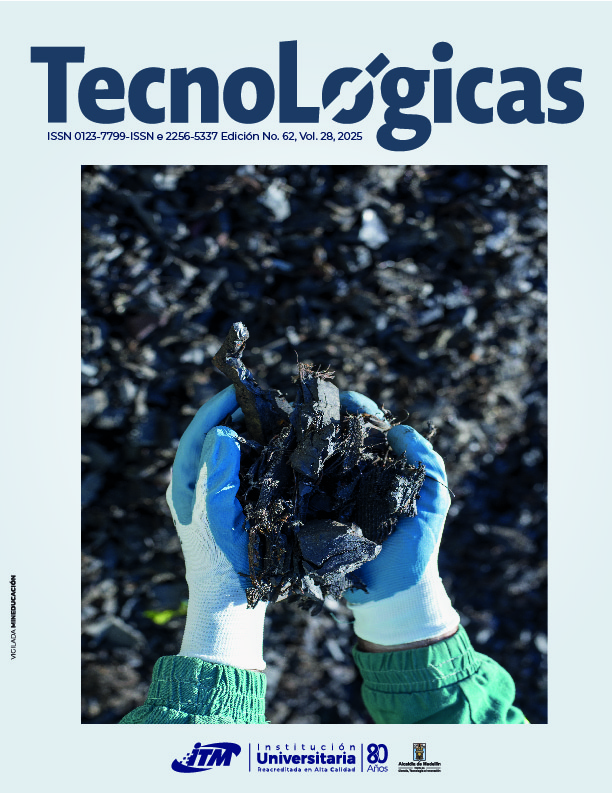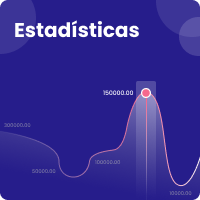Procesamiento de imágenes para la detección de un impacto láser en simuladores de tiro
Resumen
Los sistemas de simulación desempeñan un papel crucial en el entrenamiento de tiro, al ofrecer ventajas como la mejora progresiva de las habilidades del tirador, reducción de costos logísticos, ahorro de munición y menor necesidad de despliegue de personal a los polígonos de tiro. Un rasgo común en los sistemas actuales es el uso de comunicación por cable entre componentes, lo cual proporciona estabilidad, pero introduce latencia en la transmisión de datos. Además, las configuraciones cableadas limitan su uso en entornos exteriores por la falta de acceso a una fuente de energía. Este estudio desarrolló un método basado en procesamiento de imágenes para reemplazar la munición real por un dispositivo emisor láser. La metodología se estructuró en cuatro fases: (1) análisis de requisitos del sistema, (2) desarrollo de hardware y software, (3) integración del sistema con un arma de fuego real y (4) pruebas funcionales en ambientes controlados y abiertos. El sistema incorpora un mecanismo de calibración automática que se adapta a la iluminación ambiental para garantizar precisión. Al accionar el gatillo, el láser se activa y proyecta sobre una pantalla LCD; una cámara captura el impacto y un sistema integrado detecta las coordenadas (x, y). Como resultado, el prototipo alcanzó una precisión del 95.4 %, con una latencia inferior a 80 ms. En conclusión, se diseñó un sistema portátil, inalámbrico y adaptable a distintas condiciones de luz, compuesto por 10 pistas con componentes diseñados para integrarse con un arma de fuego real, como alternativa versátil y eficiente para el entrenamiento.
Referencias bibliográficas
J. A. Granados Ruiz, J. R. Pinzón Fontecha, “Modelo de evaluación para los niveles de instrucción de soldados en los batallones de instrucción y entrenamiento,” Tesis de grado, Escuela Superior de Guerra General Rafael Reyes Prieto, Bogotá, Colombia, 2010. [Online]. Available: https://www.esdegrepositorio.edu.co/handle/20.500.14205/2882
J. S. Castellanos Masmela, and C. A. Martínez Puentes, Propuesta de implementación polígono para cursos de combate en el centro internacional de entrenamiento anfibio Santiago de Tolú, Sucre: Escuela de Formación de Infantería de Marina, 2023. https://mindefensa.primo.exlibrisgroup.com/discovery/delivery/57MDN_INST:MDN/1237542240007231
Ejército Nacional de Colombia, “Plan estratégico de transformación ejército del futuro 2042,” ejercito.mil.co Accessed: Feb. 11, 2024. [Online]. Available: https://www.ejercito.mil.co/
G. H. Acosta Pedreros, and S. A. Guzman Jaimes, “Pertinencia de la implementación de las aulas de entrenamiento táctico simulado para los batallones de instrucción y entrenamiento,” Tesis de grado, Escuela Superior de Guerra General Rafael Reyes Prieto, Bogotá, Colombia, 2013. [Online]. Available: https://esdegrepositorio.edu.co/handle/20.500.14205/3302
Arma de fuego adaptada para un simulador de tiro que permite obtener una experiencia real mediante la simulación de retroceso, by I. D. Chavarro Castañeda et al., (2020, Apr 13), Patent NC2018/0010559, [Online]. Available: https://sipi.sic.gov.co/sipi/Extra/IP/Mutual/Browse.aspx?sid=638779918406392000
P. J. Rojas Guevara, “Doctrina Damasco: eje articulador de la segunda gran reforma del Ejército Nacional de Colombia,” Rev. cient. Gen. José María Córdova., vol. 15, no. 19, p. 95, Jan. 2017. https://doi.org/10.21830/19006586.78
Beamshot, “Multifution Laser Aiming System, Los Ángeles,” beamshot.com. Accessed: Feb. 11, 2024. [Online]. Available: 2024. https://www.beamshot.com/multifunction-laser-aiming-system.htm
A. Sudiarno et al., “Analysis of human performance and potential application of virtual reality (VR) shooting games as a shooting training simulator for military personnel,” IJTech, vol. 15, no. 1, p. 87, 2024. https://search.ebscohost.com/login.aspx?direct=true&profile=ehost&scope=site&authtype=crawler&jrnl=20869614&AN=175217133&h=tiihH%2FFLqrB29y2tKVyneOoU5Fzty6eEfKXmTvi%2BvxW1UHfayAqzzsDvPaLMxqGFn2A8EBJNzCr%2BPSUIwTJftw%3D%3D&crl=c
L. Wei, H. Zhou, and S. Nahavandi, “Haptically enabled simulation system for firearm shooting training,” Virtual Real., vol. 23, no. 3, pp. 217–228, Sep. 2019. https://doi.org/10.1007/s10055-018-0349-0
E. Ugur, B. Ozlem Konukseven, M. Ergen, M. E. Aksoy, and S. Ilgaz Yoner, “Is the brightness- contrast level of virtual reality videos significant for visually induced motion sickness? Experimental real-time biosensor and self-report analysis,” Frontiers in Virtual Reality, vol. 5, Aug. 2024. https://doi.org/10.3389/frvir.2024.1435049
A. T. Biggs, A. E. Jensen, and K. R. Kelly, “Heart rate of fire: exploring direct implementation of physiological measurements in realistic shoot/don’t-shoot simulations,” Front. Sports Act. Living., vol. 6, p. 1444655, Aug. 2024. https://doi.org/10.3389/fspor.2024.1444655
D. Bogatinov, P. Lameski, V. Trajkovik, and K. M. Trendova, “Firearms training simulator based on low cost motion tracking sensor,” Multimed. Tools Appl., vol. 76, no. 1, pp. 1403–1418, Jan. 2017. https://doi.org/10.1007/s11042-015-3118-z
A. Fedaravičius, K. Pilkauskas, E. Slizys, and A. Survila, “Research and development of training pistols for laser shooting simulation system,” Def. Technol., vol. 16, no. 3, pp. 530–534, Jun. 2020. https://doi.org/10.1016/j.dt.2019.06.018
A. Soetedjo, A. Mahmudi, M. Ashari, and Y. I. Nakhoda, “Detecting Laser Spot In Shooting Simulator Using An Embedded Camera,” International Journal on Smart Sensing and Intelligent Systems, vol. 7, no.1, pp. 1-19, Mar. 2014. https://eprints.itn.ac.id/5304/
Z. Wang, Y.-M. M. Hu, and F. Xie, “Optical fiber simulator for shooting and aiming practices,” in Proceedings Volume 2895, Fiber Optic Sensors V, Beijing, China,1996. https://doi.org/10.1117/12.252196
Special Pie, “L17Pro Laser Shooting Simulator,” special314.com. Accessed: Feb. 11, 2024. [Online]. Available: https://www.special314.com/sp/85.html?admin_id=1
K. Teguh Martono, O. Dwi Nurhayati, and C. Galuhputri Wulwida, “Augmented reality–based shooting simulator system to analysis of virtual distance to real distance using unity 3D,” Journal of Theoretical and Applied Information Technology, vol. 95, no. 23. Dec. 2017. https://www.jatit.org/volumes/Vol95No23/2Vol95No23.pdf
A. Buga et al., “The VirTra V-100 is a test-retest reliable shooting simulator for measuring accuracy/precision, decision-making, and reaction time in civilians, police/SWAT, and military personnel,” J. Strength Cond. Res., vol. 38, no. 10, pp. 1714-1723, Oct. 2024. https://journals.lww.com/nsca-jscr/abstract/2024/10000/the_virtra_v_100_is_a_test_retest_reliable.3.aspx
M. Lesaffre, N. Verrier, and M. Gross, “Noise and signal scaling factors in digital holography in weak illumination: relationship with shot noise,” Appl. Opt., vol. 52, no. 1, pp. A81-91, 2013. https://doi.org/10.1364/AO.52.000A81
M. Maciejewski, M. Piszczek, M. Pomianek, and N. Pałka, “Optoelectronic tracking system for shooting simulator - tests in a virtual reality application,” Photonics Lett. Pol., vol. 12, no. 2, p. 61, Jul. 2020. https://doi.org/10.4302/plp.v12i2.1025
E. dos S. Soares, S. T. Corazza, A. C. Piovesan, R. P. de Azevedo, and S. J. L. Vasconcellos, “Creation, validation, and reliability of a shooting simulator instrument for reaction time evaluation,” Motriz, vol. 22, no. 4, pp. 277–282, Dec. 2016. https://doi.org/10.1590/S1980-6574201600040010
A. Shahal, W. Hemmerich, and H. Hecht, “Brightness and contrast do not affect visually induced motion sickness in a passively-flown fixed-base flight simulator,” Displays, vol. 44, pp. 5–14, Sep. 2016. https://doi.org/10.1016/j.displa.2016.05.007
S. van der Walt et al., “scikit-image: image processing in Python,” PeerJ, vol. 2, p. e453, Jun. 2014. https://doi.org/10.7717/peerj.453
R. Serrano Oller, “DSLR Project: Control de càmeres DSLR en temps real mitjançant dispositius tipus RaspberryPi,” Tesi de grau, Universitat De Barcelona, Barcelona, España, 2014. https://diposit.ub.edu/dspace/handle/2445/61663
T. Pierre-Jean, and P.Mabacker, “Building our First Poky Image for the Raspberry Pi,” in Yocto for Raspberry Pi, Birmingham, Inglaterra: Packt Publishing, 2016, pp. 27-28. https://books.google.com.co/books?hl=es&lr=&id=Bf5vDQAAQBAJ&oi=fnd&pg=PP1&dq=P.-J.+Texier+y+P.+Mabacker,+Yocto+for+Raspberry+Pi+:+Create+Unique+and+Amazing+Projects+by+Using+the+Powerful+Combination+of+Yocto+and+Raspberry+Pi,+Birmingham,+&ots=jlqeoMHBY2&sig=tvVea30YfGWdAeil9VsrkYvAENo&redir_esc=y#v=onepage&q&f=false
Intel. OpenCV - Open Computer Vision Library. (1999). OpenCV. Accessed: Feb. 11, 2024. [Online]. Available: https://docs.opencv.org/2.4/index.html.
P. A. Laplante, “Software Engineering: An Overview,” in Software Engineering for Image Processing Systems. Boca Ratón, FL, USA: CRC Press, 2003, ch. 1, pp.1-20. https://doi.org/10.1201/9780203496107
Gechic, “Perfect Match for Human Machine Interface,” icitouchtech.com. Accessed: Feb. 11, 2024. [Online]. Available: 2024. https://www.icitouchtech.com/gechic-t151a-touch-monitor-15-inch
J. Weng, P. Cohen, and M. Herniou, “Camera calibration with distortion models and accuracy evaluation,” IEEE Transactions on Pattern Analysis and Machine Intelligence, vol. 14, no. 10, pp. 965-980, Oct. 1992. https://doi.org/10.1109/34.159901
T. Grant, A. Rohou, and N. Grigorieff, “cisTEM, user-friendly software for single-particle image processing,” Elife, vol. 7, p. e35383, Mar. 2018. https://doi.org/10.7554/eLife.35383
A. Baranski et al., “MAUI (MBI Analysis User Interface)-An image processing pipeline for Multiplexed Mass Based Imaging,” PLoS Comput. Biol., vol. 17, no. 4, p. e1008887, 2021. https://doi.org/10.1371/journal.pcbi.1008887
S. Bash, B. Johnson, W. Gibbs, T. Zhang, A. Shankaranarayanan, and L. N. Tanenbaum, “Deep learning image processing enables 40% faster spinal MR scans which match or exceed quality of standard of care : A prospective multicenter multireader study: A prospective multicenter multireader study,” Clin. Neuroradiol., vol. 32, no. 1, pp. 197–203, 2022. https://doi.org/10.1007/s00062-021-01121-2
T. Pietzsch, S. Preibisch, P. Tomancák, and S. Saalfeld, “ImgLib2--generic image processing in Java,” Bioinformatics, vol. 28, no. 22, pp. 3009–3011, Nov. 2012. https://doi.org/10.1093/bioinformatics/bts543
Ejército Nacional de Colombia, “Dirección de Aplicación de Normas de Transparencia del Ejército,” ejercito.mil.co. Accessed: Feb. 11, 2024. [Online]. Available: https://www.ejercito.mil.co/direccion-de-aplicacion-de-normas-de-transparencia-del-ejercito/
Z. Zhang, Y. Liu, and W.-H. Peng, “Side information-driven image coding for hybrid machine–human vision,” EURASIP J. Image Video Process., vol. 3, no. 1, Jan. 2025.https://doi.org/10.1186/s13640-024-00661-0
C. G. Harris, and M. J. Stephens, “A Combined Corner and Edge Detector,” in Proceedings of the Alvey Vision Conference, 1988, pp. 23.1-23.6. https://www.semanticscholar.org/paper/A-Combined-Corner-and-Edge-Detector-Harris-Stephens/6818668fb895d95861a2eb9673ddc3a41e27b3b3
A. Pál, «fitsh– a software package for image processing,» Monthly Notices of the Royal Astronomical Society, vol. 421, p. 1825–1837, 2012. https://doi.org/10.1111/j.1365-2966.2011.19813.x
P. Hajder, and Ł. Rauch, “Moving multiscale modelling to the edge: Benchmarking and load optimization for cellular automata on low power microcomputers,” Processes, vol. 9, no. 12, p. 2225, 2021. https://doi.org/10.3390/pr9122225
R. B. Marks, I. C. Gifford, and B. O'Hara, “Standards in IEEE 802 unleash the wireless Internet,” in IEEE Microwave Magazine, vol. 2, no. 2, pp. 46-56, Jun. 2001. https://doi.org/10.1109/6668.924918
Y. Amri, and M. A. Setiawan, “Improving Smart Home Concept with the Internet of Things Concept Using RaspberryPi and NodeMCU,” in IOP Conference Series. Materials Science and Engineering, Philadelphia, Pennsylvania, USA, 2018, p. 012021.https://iopscience.iop.org/article/10.1088/1757-899X/325/1/012021/pdf
E. Gamess, and S. Hernandez, “Performance evaluation of different raspberry pi models for a broad spectrum of interests,” Int. J. Adv. Comput. Sci. Appl., vol. 13, no. 2, May. 2022. http://dx.doi.org/10.14569/IJACSA.2022.0130295
R. Ildar, “RaspberryPI for mosquito neutralization by power laser,” arXiv [cs.CV], 2021. https://doi.org/10.48550/arXiv.2105.14190
M. Lukitasari, W. I. Windarti, E. P. L. Fatma, T. Suharsono, and D. A. Nugroho, “The efficacy of Raspberry Pi-based automatic voice message education on knowledge level and prevention behavior of high-risk population,” Healthc. Low Resour. Settings, vol. 11, no. s1, 2023. https://doi.org/10.4081/hls.2023.11178
R. Vilches Pons, “Red de sensores pervasiva para el bienestar basada en RaspberryPi,” Tesi de grau, UPC Universitat Politècnica de Catalunya, Barcelona, España, 2013. https://upcommons.upc.edu/handle/2099.1/18780
O. Marzuqi, A. Virgono, and R. M. Negara, “Implementation model architecture software defined network using raspberry Pi: a review paper,” TELKOMNIKA, vol. 17, no. 3, p. 1136, 2019. https://telkomnika.uad.ac.id/index.php/TELKOMNIKA/article/view/8859
I. Rakhmatulin, and S. Volkl, “Brain-Computer-Interface controlled robot via RaspberryPi and PiEEG,” arXiv [cs.RO], Feb. 2022. https://arxiv.org/abs/2202.01936
S. Merugu, D. N. Sudha, T. K. Juluru, R. Rao, and S. K. Reddy Ravula, “Raspberry Pi based Intelligent Classroom Information and Management System using LBP Method,” in IOP Conference Series. Materials Science and Engineering, Warangal, India, 2020., p. 032035.https://doi.org/10.1088/1757-899X/981/3/032035
F. Morales, L. Bernal, G. Pereira, S. Pérez-Buitrago, M. Kammer, and D. H. Stalder, “PytuTester: RaspberryPi open-source ventilator tester,” HardwareX, vol. 12, p. e00334, Jun. 2022. https://doi.org/10.1016/j.ohx.2022.e00334
P. Lanari et al., “XMapTools: A MATLAB©-based program for electron microprobe X-ray image processing and geothermobarometry,” Comput. Geosci., vol. 62, pp. 227–240, Jan. 2014. https://doi.org/10.1016/j.cageo.2013.08.010
L. C. Ngugi, M. Abelwahab, and M. Abo-Zahhad, “Recent advances in image processing techniques for automated leaf pest and disease recognition – A review,” Inf. Process. Agric., vol. 8, no. 1, pp. 27–51, Mar. 2021. https://doi.org/10.1016/j.inpa.2020.04.004
M. G. Selvaraj, M. Valderrama, D. Guzman, M. Valencia, H. Ruiz, and A. Acharjee, “Machine learning for high-throughput field phenotyping and image processing provides insight into the association of above and below-ground traits in cassava (Manihot esculenta Crantz),” Plant Methods, vol. 16, no. 1, p. 87, Jun. 2020. https://doi.org/10.1186/s13007-020-00625-1
C. A. Gomez Gonzalez et al., “VIP: Vortex image processing package for high-contrast direct imaging,” Astron. J., vol. 154, no. 1, p. 7, Jun. 2017. https://iopscience.iop.org/article/10.3847/1538-3881/aa73d7/meta
H. W. L.eung Mak, R. Han, and H. H. F. Yin, “Application of Variational AutoEncoder (VAE) model and image processing approaches in game design,” Sensors, vol. 23, no. 7, p. 3457, Mar. 2023. https://doi.org/10.3390/s23073457
D. Millan Escriva, P. Joshi, V. G. Mendonca, and R. Shilkrot, “An Introduction to the Basics of OpenCV,” in Building Computer Vision Projects with OpenCV 4 and C++: Implement complex computer vision algorithms and explore deep learning and face detection. Birmingham, England: Packt Publishing, 2019, ch. 2, pp. 41–48. https://books.google.com.co/books?hl=es&lr=&id=naOPDwAAQBAJ&oi=fnd&pg=PP1&dq=%5B54%5D%09D.+Mill%C3%A1n+Escriv%C3%A1,+P.+Joshi,+V.+G.+Mendon%C3%A7a+y+R.+Shilkrot,+Building+Computer+Vision+Projects+with+OpenCV+4+and+C%2B%2B+:+Implement+Complex+Computer+Vision+Algorithms+and+Explore+Deep+Learning+&ots=_8aHLwVvkn&sig=OydZuiemOrAwI94PNtDxKXsulSo&redir_esc=y#v=onepage&q&f=false
M. Nixon, and A. Aguado, “Moving object detection and description,” in Feature extraction and Image Processing for Computer Vision. San Diego, CA, USA: Academic Press, 2019, ch. 9, pp. 257–280. https://books.google.com.co/books?hl=es&lr=&id=KcW-DwAAQBAJ&oi=fnd&pg=PP1&dq=%5B56%5D%09M.+Nixon,+Feature+Extraction+and+Image+Processing+for+Computer+Vision,+3+ed.,+San+Diego,+UNITED+KINGDOM:+Elsevier+Science+%26+Technology&ots=11ly2pRF3S&sig=IkMRT66aDSGNGDjVUTr_Z3AHv2k&redir_esc=y#v=onepage&q&f=false
Z. Zhang, "A flexible new technique for camera calibration," IEEE Transactions on Pattern Analysis and Machine Intelligence, vol. 22, no. 11, pp. 1330–1334, Nov. 2000. https://doi.org/10.1109/34.888718
G. Pau, F. Fuchs, O. Sklyar, M. Boutros, and W. Huber, “EBImage--an R package for image processing with applications to cellular phenotype,s, Bioinformatics, vol. 26, no. 7, pp. 979–981, Apr. 2010. https://doi.org/10.1093/bioinformatics/btq046
Beamhit, “Military, DOD, and Law Enforcement Systems,” beamhit.net. Accessed: Feb. 11, 2024. [Online]. Available: https://www.beamhit.net/controlledsystems
Vitra, “Comprehensive Simulation Training Solutions for Law Enforcement and Military,” virtra.com, 2024. Accessed: Feb. 11, 2024. [Online]. Available: https://www.virtra.com/?lang=es
J. A. Silva Achancaray, “La gestión de las Tecnologías de la Información y Comunicaciones y el desarrollo de Simuladores de Armas en el Comando de Educación y Doctrina del Ejército en el año 2017” Tesis de Maestría, Instituto Científico y Tecnológico del Ejercito, Lima, Perú, 2017. https://repositoriodev.icte.edu.pe/bitstream/handle/ICTE/137/Tesis%20Juan%20Silva%20Achancaray.pdf?sequence=1&isAllowed=y
Laser Ammo Traimim Technologies, “Simulador de Smokeless Range 2.0,” laserammo.com, 2025. Accessed: Feb. 11, 2024. [Online]. Available: https://www.laserammo.com/store/Simulators-Targets/Simulators/Smokeless-Range/Smokeless-Range-20-Simulator
A. T. Biggs, J. A. Hamilton, A. G. Thompson, and R. Markwald, “Talk is cheap: Self-reported versus actual marksmanship proficiency among military and community samples,” Am. J. Psychol., vol. 137, no. 1, pp. 1–17, Sep. 2024. https://doi.org/10.5406/19398298.137.1.01
A. Soetedjo, A. Mahmudi, M. I. Ashari, and Y. I. Nakhoda, “Low cost shooting simulator based on a single board computer,” Am. J. Appl. Sci., vol. 12, no. 2, pp. 130–141, 2015. https://doi.org/10.3844/ajassp.2015.130.141
Laser Shot, “Simulador de Entrenamiento de Puntería Móvil,” lasershot.com. Accessed: Feb. 11, 2024. [Online]. Available: https://lasershot.com/es/simuladores-militares/#mmtsmil
Descargas
Derechos de autor 2025 TecnoLógicas

Esta obra está bajo una licencia internacional Creative Commons Atribución-NoComercial-CompartirIgual 4.0.

| Estadísticas de artículo | |
|---|---|
| Vistas de resúmenes | |
| Vistas de PDF | |
| Descargas de PDF | |
| Vistas de HTML | |
| Otras vistas | |








